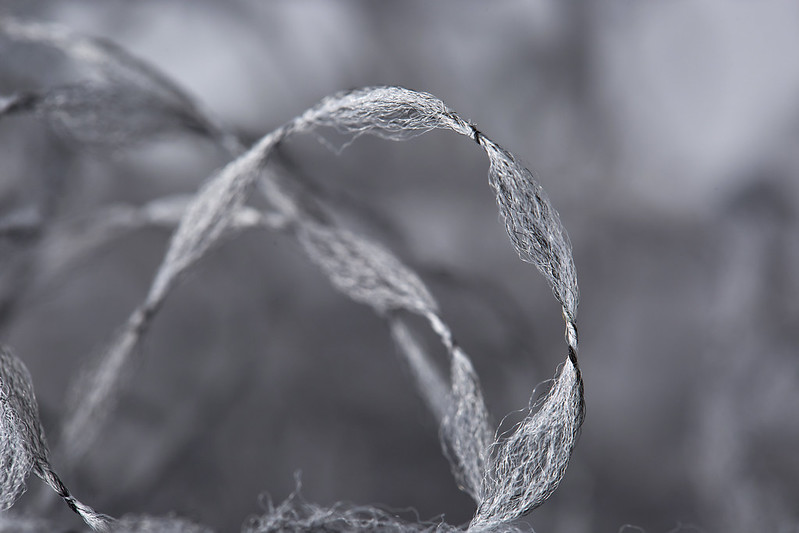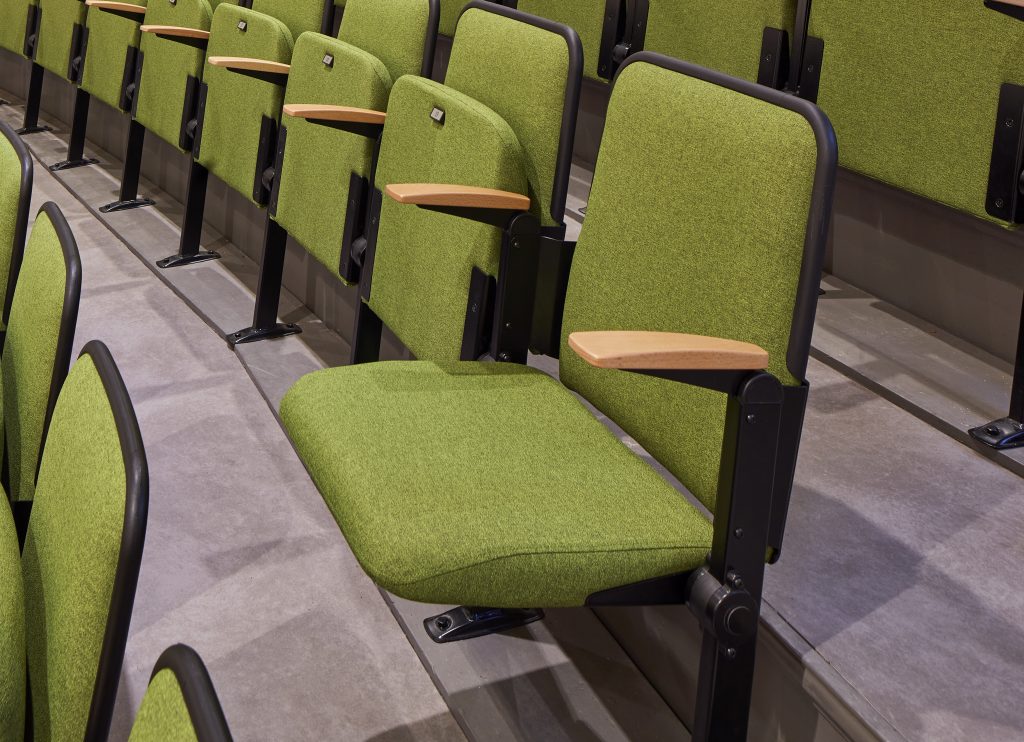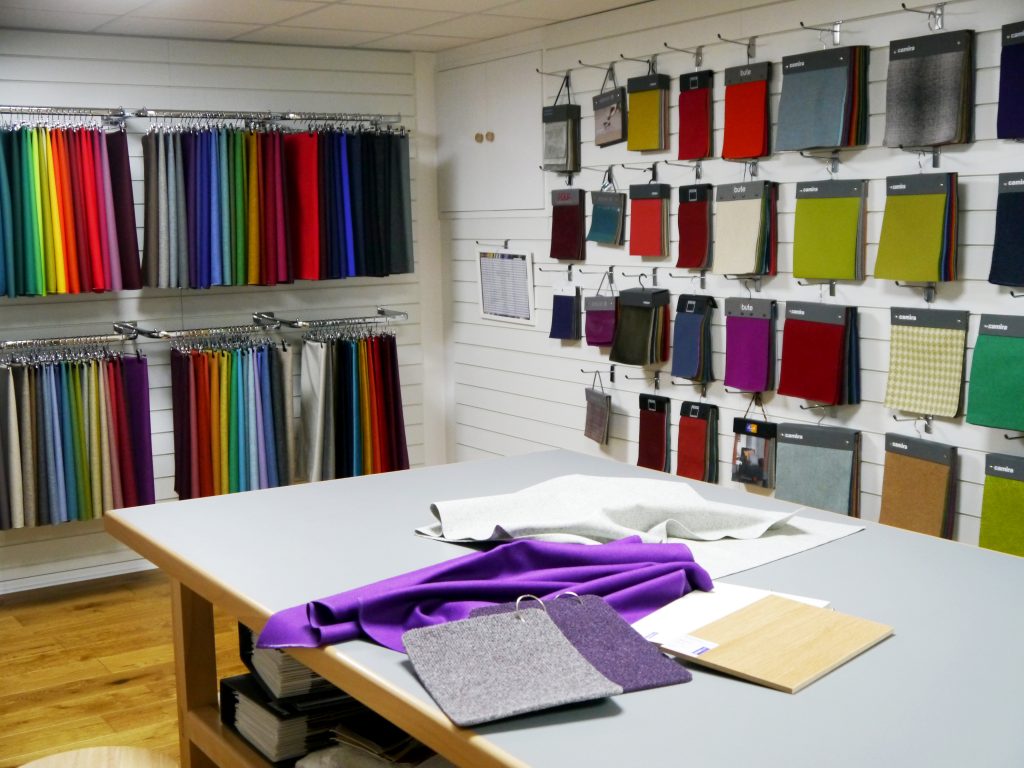From Scrap to Seating: How plastic bottles and waste textiles become the fabric for our seats.
Polyester is a versatile and affordable fabric. A good polyester upholsters well, and is highly resistant to wear. However, there’s no getting around the fact that polyester is a plastic. It has a high carbon footprint through manufacture, and at the end of its life can break down into environmentally hazardous microplastics.
At Audience Systems, we understand the benefits of polyester in terms of its longevity and practicality, but like you, we want something better from a sustainability viewpoint. Our solution comes from UK fabric manufacturer Camira. Their Xtreme and X2 fabrics, which are the standard fabric for our seating, are woven from polyester yarn manufactured from post-consumer plastics – ie plastic bottles that would otherwise have gone to landfill. We offer these alongside a wide range of other sustainable fabrics, including those woven from wool, flax hemp or even nettle.
If you’re a fan of the numbers, Camira Xtreme has a “global warming potential” (GWP) per m2 of fabric of just 1.7kg CO2E*. Camira are able to achieve this low number by using plastic bottles as a source material, and by using only sustainable energy sources in their Yorkshire mill. Compare this to a virgin polyester manufactured in a factory powered by fossil fuels, whose GWP is an eye-watering 168.4kg CO2E.
So how does a plastic bottle become a soft fabric? It’s a fascinating process to watch. The bottles are cleaned, shredded into flakes, melted into liquid plastic, and then extruded through tiny holes to form long strands. These strands are then stretched and twisted into fibres, which are spun together into yarn. You can see a short video of a similar yarn (used for clothing) being made here.

The yarn used to make X2 fabric. This image and header image courtesy of Camira Fabrics
Our second standard polyester fabric, Camira X2, also helps, in its own small way, to tackle another massive environmental issue – textile waste. It seems incomprehensible, but every seven minutes, a stack of textiles the size of Mount Everest is sent to landfill. While 75% of the X2 fabric is manufactured from post-consumer plastic waste, 25% is from recycled textiles, including Camira’s own yarn remnants and selvedges, as well as waste from the clothing and sports apparel industries. You can see the recycled textiles in the black yarn woven through the X2 fabric, which gives it its distinctive look.

An Accolade chair upholstered in Camira X2 fabric at Maesteg Town Hall, UK
At the end of life, provided you have some labour to break the chairs into components, polyester can be diverted to a specialist recycler and made into products including paper, insultation material, and new fabric. The good news is that in the manufacture of our seats, we use no glue between fabric and foam, making separation easier. We can also provide you with evidence of the source of the fabric, to help you prove that the fabric does not contain POPs, forever chemicals legally must be destroyed by incineration.
To see our whole range of sustainable fabric options, including “chair-sized” samples of Xtreme and X2, make an appointment to visit the fabric showroom at our factory in Westbury, UK. Alternatively you can make an appointment to meet at our London showroom, or call us for advice and to order samples.

Audience Systems’ fabric showroom in Westbury.
* CO2E stands for “CO2 equivalent”. This is a combined measure of all greenhouse gases converted into the equivalent measure of CO2.

